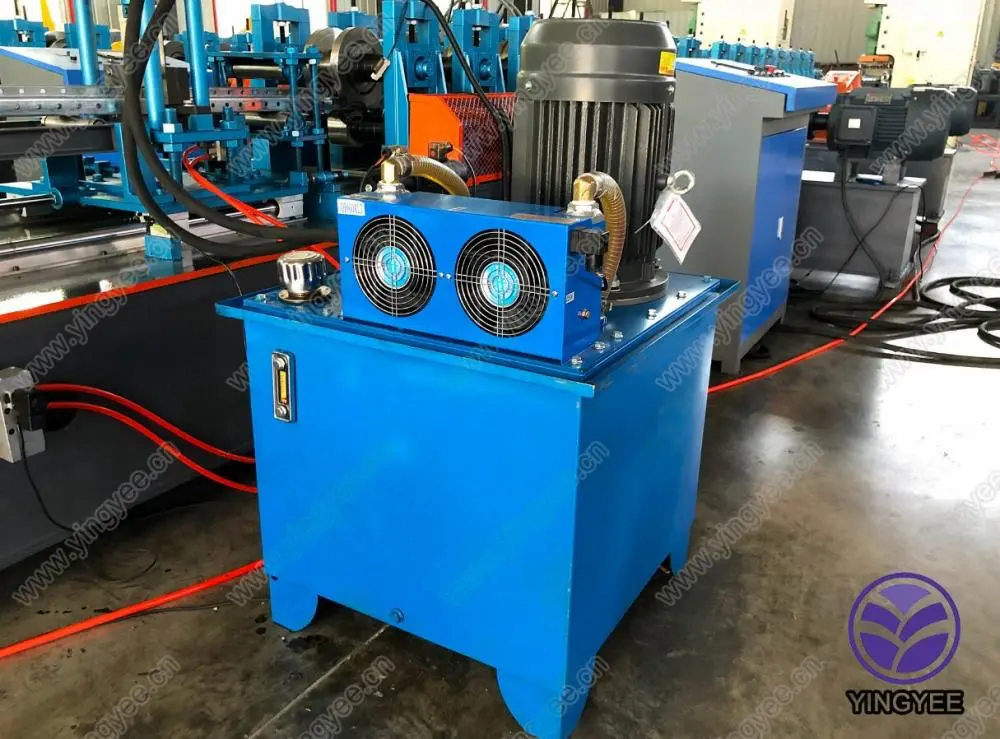
The Advancements in C Purlin Roll Forming Machines
In the modern construction industry, the efficiency and structural integrity of buildings hinge significantly on the quality of materials used. One of the essential components that hold structures together is the purlin, which provides support for roofs and walls. To meet the increasing demand for high-quality purlins, the manufacturing process has evolved, leading to the emergence of specialized machinery known as C Purlin Roll Forming Machines.
Understanding C Purlin Roll Forming Machines
C Purlin Roll Forming Machines are state-of-the-art devices designed to produce C-shaped purlins from steel coils. The machines utilize a series of rollers to progressively shape flat strips of metal into the desired C profile. This automated process not only enhances production efficiency but also ensures uniformity and high precision in the final output.
The advantages of C purlins are manifold. They are lightweight yet sturdy, making them ideal for building frameworks where weight considerations are crucial. Additionally, their C shape provides greater load-bearing capacity and allows for easier installation compared to traditional building materials.
Key Features of C Purlin Roll Forming Machines
1. Versatility Modern C Purlin Roll Forming Machines are designed to accommodate varying specifications. Manufacturers can customize the machine to produce different sizes and thicknesses of purlins, making it suitable for a range of construction projects.
2. High Efficiency These machines can produce large quantities of purlins in a short amount of time. With automated feeding and cutting systems, production rates can substantially increase, reducing labor costs and time.
3. Durability and Reliability Built using high-quality materials, C Purlin Roll Forming Machines are designed to endure rigorous operational demands. Moreover, advanced engineering ensures that they can operate continuously without compromising precision, thus minimizing downtime.

4. Ease of Operation Most machines come equipped with user-friendly interfaces and automated controls, allowing operators to monitor and manage the production process effortlessly. This ease of operation reduces the training time for new employees and enhances overall productivity.
The Manufacturing Process
The production cycle of C purlins typically involves several steps
- Material Loading Steel coils are loaded onto the machine, ready for processing. - Roll Forming The machine then guides the metal through a series of rollers that form it into the desired C shape. - Cutting Once the purlins reach the specified length, an automated cutting system accurately cuts them to size. - Quality Control Each purlin undergoes rigorous quality checks to meet industry standards before being packaged for delivery.
Market Trends and Future Prospects
As the construction sector continues to expand globally, the demand for C Purlin Roll Forming Machines is expected to rise. Market trends indicate that manufacturers are increasingly focusing on incorporating advanced technologies, such as IoT and automation, into their machinery. This would enhance monitoring capabilities and further streamline production processes.
Sustainability is also becoming a focal point for manufacturers. Many are exploring methods to reduce waste during the roll forming process, ensuring not only profitability but also environmental responsibility. The use of recyclable materials in production is another trend that aligns with global sustainability efforts.
Conclusion
In conclusion, C Purlin Roll Forming Machines play a critical role in the construction industry by providing effective solutions for producing high-quality purlins. With continuous advancements in technology, these machines promise to adapt and evolve, meeting the needs of modern construction practices and ensuring the integrity of future building designs. As awareness of quality and efficiency grows, investing in such manufacturing technology will undoubtedly yield significant returns for companies in the sector.